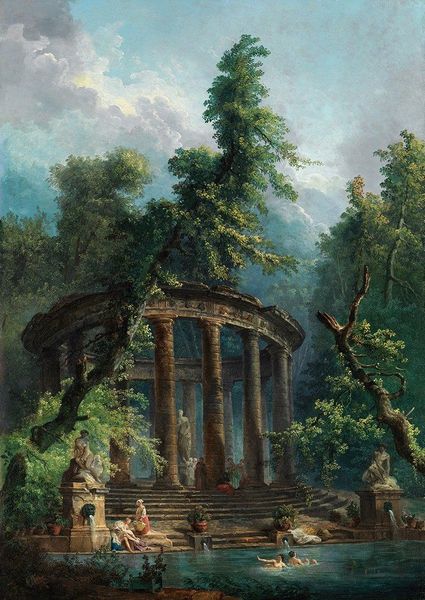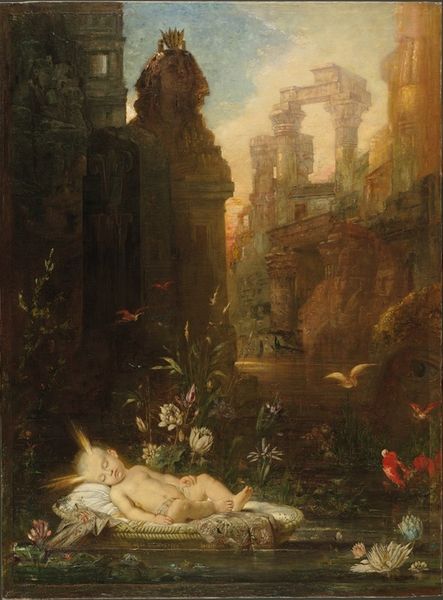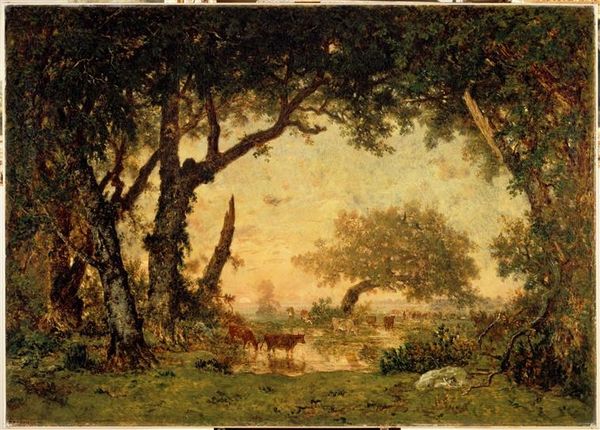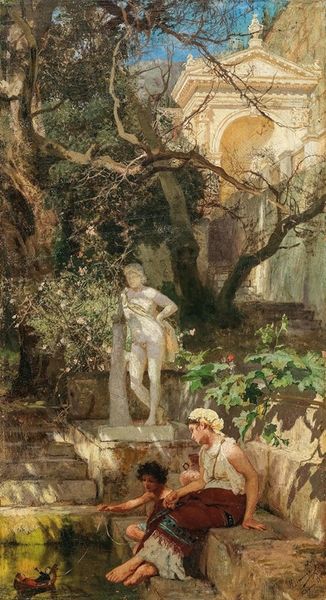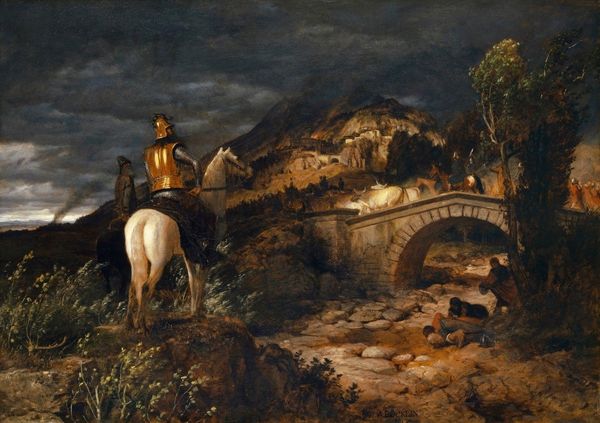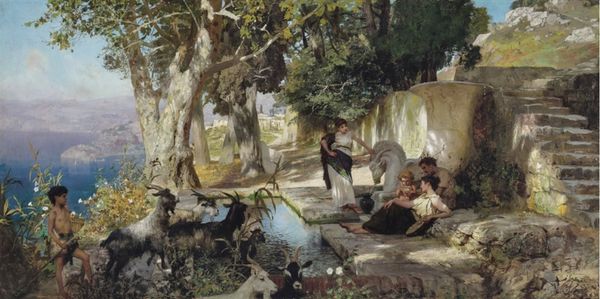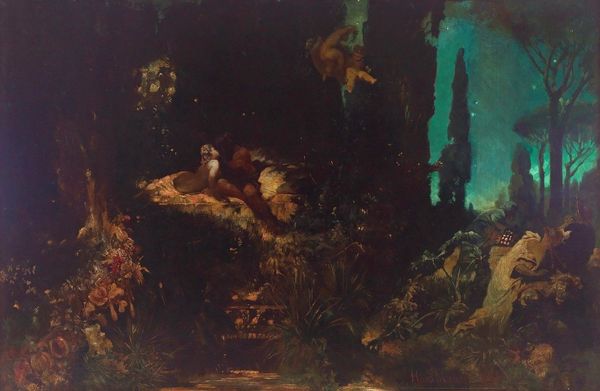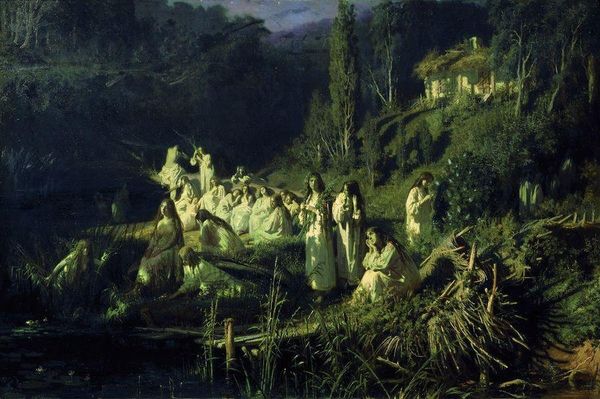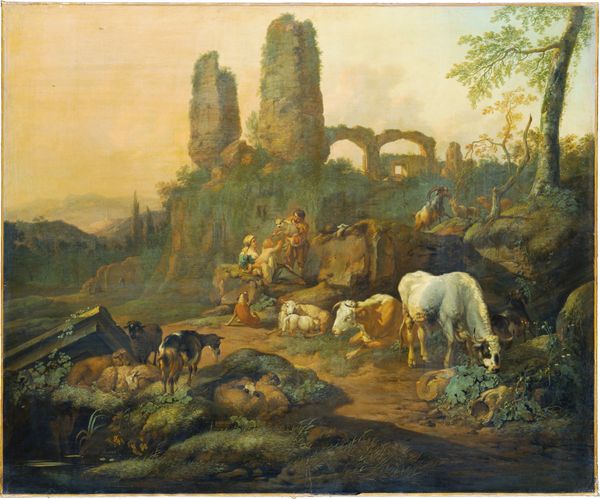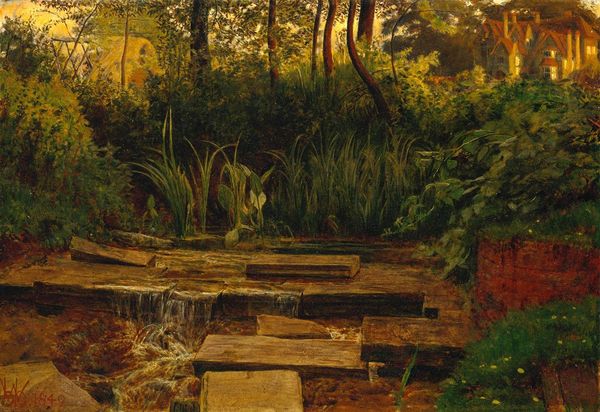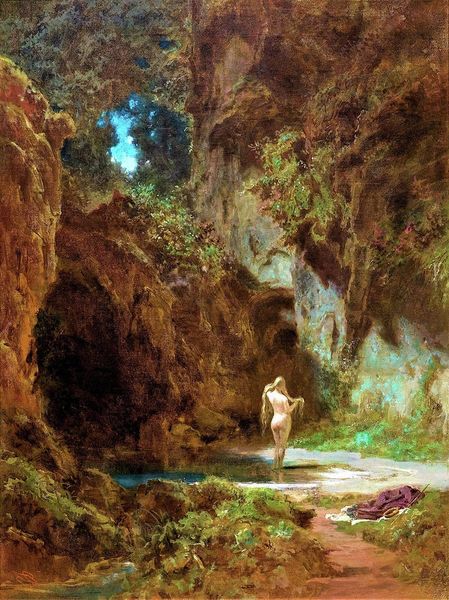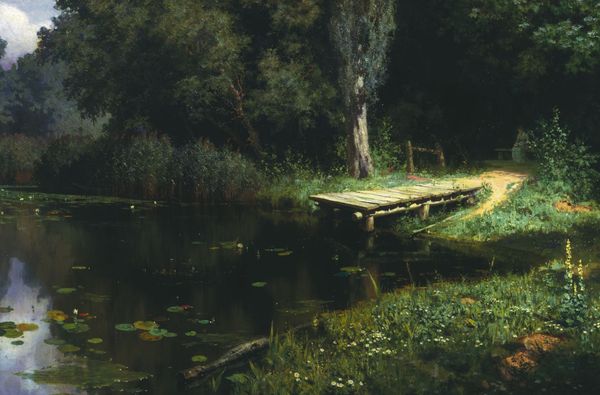
oil-paint
#
oil-paint
#
landscape
#
oil painting
#
romanticism
#
history-painting
Copyright: Public Domain: Artvee
Editor: Waldmüller’s "Die Römische Ruine in Schönbrunn," created in 1832 with oil paint, presents a compelling composition. It’s interesting how the ruined architecture is juxtaposed with lush nature, but I'm curious about its implications. How do you interpret this work in light of the socio-political climate of the time? Curator: The ruins aren’t just aesthetic; they speak to a very specific historical consciousness. Think about it: Romanticism often grappled with the decay of empires and the fragility of human achievement, positioning nature as this powerful, enduring force that reclaims human spaces. Given the political upheavals following the Napoleonic era, might this image be a coded commentary on the instability of power structures? How does the re-appropriation of Rome and its power operate within Austrian identity? Editor: So, it's more than just a pretty landscape? I didn't think about the statement it makes regarding the fleeting nature of empires and power itself. The picturesque ruin seems like a deliberate choice... Curator: Exactly. And it begs the question: who gets to define history, and for what purposes? The choice of a *Roman* ruin in an Austrian setting is critical. Is this painting, through its engagement with history, perhaps questioning Austrian’s place on the geopolitical chessboard? Or is it nostalgic, an aesthetic sanitisation? How might ideas of national identity be intertwined here? Editor: That makes a lot of sense. I'm beginning to see how Waldmüller's choice challenges us to unpack our preconceived notions of history, power, and identity itself. Curator: Precisely! By viewing artworks as products of historical and social forces, we are equipped to look more deeply at the complex webs of meaning that surround them, enabling us to understand and act critically within our present.
Comments
No comments
Be the first to comment and join the conversation on the ultimate creative platform.
